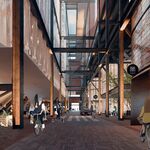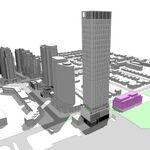So what's an average commuter? Someone going from the 401 and 407 to the 400 at King Road? just users of the highway, or all users including those on area highways that benefit from redirected traffic? Etc.
I'm dubious of the 30 second claim and I've never really seen the source and explanation for the rationale.
The 2012 study that selected the corridor as the preferred alternative projected a reduction of peak hour vehicle-delay (congestion) of about 10% across the entire study area (20,372 hours of delay versus 22,551) versus not constructing the highway and only widening the freeway network. Similarly, it improved the % of the freeway network operating above LOS D from 66% to 72%.
Chapter-4.pdf (gta-west.com)
(page 61 of the PDF, alternative 3-1 is widening only, alternative 4-2 is the GTA west corridor that was selected).
Across all 776,800 auto commuters in the study area, this results in a mere 10 seconds of time saved per commuter. However, the total average congestion without the highway per commuter in the study area is only 1:45, as many commuters experience little to no congestion driving to local employment. The highway would have much greater time savings for longer distance commuters.
Interestingly, it mostly comes from removing traffic from local roads and shifting it to the freeway network, reducing congestion.
This is notably only time savings from congestion only as well. As I said, most of the congestion reductions will be on the local road network, which will be because people shift trips onto the faster freeway. There will be additional time savings from having a new, faster route as well, which will occur at all times of day regardless of congestion.
What this basically means is that without the corridor the new development in Caledon and Brampton would see severe local road network congestion as people drive all the way through Brampton and Vaughan in order to access the freeway network, and they will be the biggest benefactors of the highway, but it will also reduce congestion on the existing freeway network and provide more alternate routes, which will help existing commuters.





